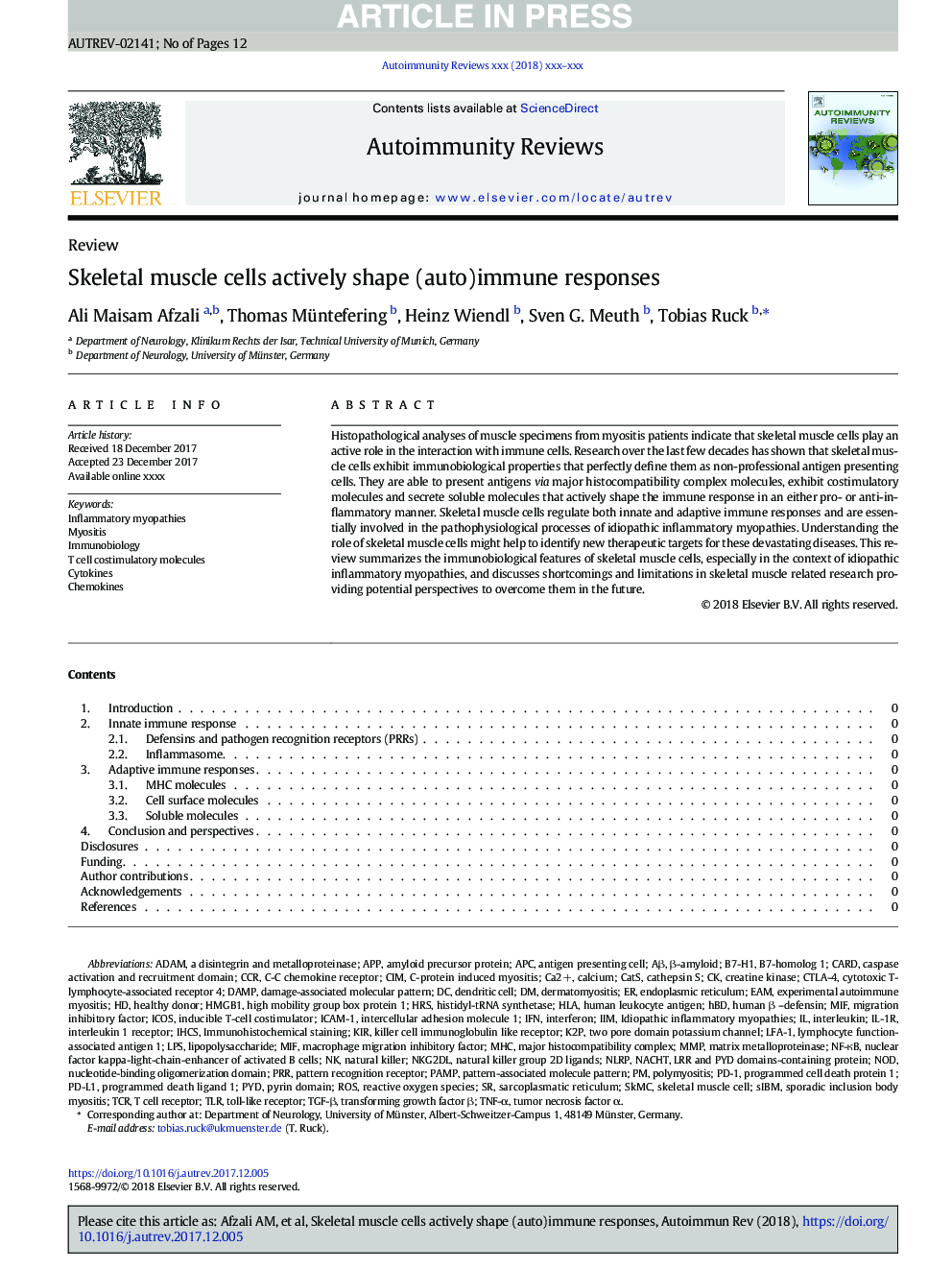| Article ID | Journal | Published Year | Pages | File Type |
|---|---|---|---|---|
| 8736405 | Autoimmunity Reviews | 2018 | 12 Pages |
Abstract
Histopathological analyses of muscle specimens from myositis patients indicate that skeletal muscle cells play an active role in the interaction with immune cells. Research over the last few decades has shown that skeletal muscle cells exhibit immunobiological properties that perfectly define them as non-professional antigen presenting cells. They are able to present antigens via major histocompatibility complex molecules, exhibit costimulatory molecules and secrete soluble molecules that actively shape the immune response in an either pro- or anti-inflammatory manner. Skeletal muscle cells regulate both innate and adaptive immune responses and are essentially involved in the pathophysiological processes of idiopathic inflammatory myopathies. Understanding the role of skeletal muscle cells might help to identify new therapeutic targets for these devastating diseases. This review summarizes the immunobiological features of skeletal muscle cells, especially in the context of idiopathic inflammatory myopathies, and discusses shortcomings and limitations in skeletal muscle related research providing potential perspectives to overcome them in the future.
Keywords
KirDAMPICAM-1CIMHRSAPCAPPHistidyl-tRNA synthetasePAMPTLRIHCsPYDHMGB1PRRLFA-1IL-1Rinducible T-cell costimulatorB7-H1K2PSIBMNlrpICOSLPSNF-κBMMPSkMCNODTCrCTLA-4PD-1CCRTGF-βIIMPD-L1AβHbdnatural killerC-C chemokine receptorCa2+EAMROSβ-AmyloidADAMHuman leukocyte antigenlymphocyte function-associated antigen 1HLAdamage-associated molecular patternhealthy donorImmunobiologyinterferonIFNinterleukinTransforming growth factor βa disintegrin and metalloproteinasetumor necrosis factor αToll-like receptornucleotide-binding oligomerization domainpyrin domaindermatomyositisImmunohistochemical stainingDendritic cellSkeletal muscle cellantigen presenting cellCytokinesendoplasmic reticulumMIFMigration inhibitory factorMacrophage migration inhibitory factorTNF-αnuclear factor kappa-light-chain-enhancer of activated B cellscaspase activation and recruitment domainlipopolysaccharideProgrammed death ligand 1matrix metalloproteinasemyositisMHCmajor histocompatibility complexIntercellular adhesion molecule 1Sporadic inclusion body myositisInflammatory myopathiesIdiopathic inflammatory myopathiesprogrammed cell death protein 1amyloid precursor proteinhigh mobility group box protein 1PolymyositisCathepsin SCARDCreatine kinaseChemokinesCalciumCatsReactive oxygen speciesInterleukin 1 receptorT cell receptorpattern recognition receptor
Related Topics
Life Sciences
Immunology and Microbiology
Immunology
Authors
Ali Maisam Afzali, Thomas Müntefering, Heinz Wiendl, Sven G. Meuth, Tobias Ruck,
